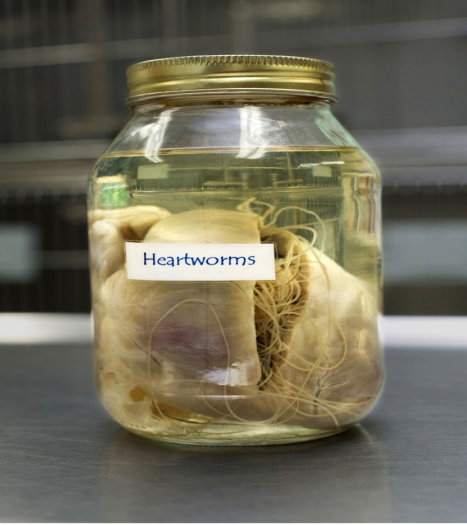Heartworm
Heartworm is a parasitic nematode (Dirofilaria immitis) that is transmitted to greyhounds by both saltmarsh and
freshwater mosquitoes.
Heartworm larvae migrate in the blood vessels of greyhounds to mature in the pulmonary arteries and the
heart. Adult heartworms can reach 30cm in length and live for up to eight years.

Symptoms
Symptoms usually begin with a persistent cough and when the worms mature they crowd in the greyhound’s
heart affecting the dog’s circulation and respiration.
As a result, greyhounds will tire more quickly and have difficulty exercising. Left untreated, eventually most greyhounds will die.
How to protect your greyhound
Prevention of heartworm in greyhounds is very simple and inexpensive, and every greyhound in Queensland should be on a preventative program beginning when they are puppies.
There are several options for heartworm prevention, including a daily or monthly medication.
There is also an annual injectable preventative medication.
Greyhounds must be tested for pre-existing heartworm infestation before prevention can begin.
Contact your veterinarian to discuss the best preventive method for your circumstances.
Preventing the spread of heartworm
By reducing mosquito numbers this will assist in preventing the spread of heartworm. You can help reduce mosquito numbers by:
• Emptying any containers around the home that may contain rainwater such plant saucers, tyres, buckets, and clear blocked gutters.
• Keeping your swimming pool chlorinated.
• Screening all openings to tanks, wells or other large water containers with wire gauze no coarser than 1mm mesh. This prevents mosquitoes from laying eggs.
• Cutting back and trim trees to prevent leaves and debris from blocking guttering.
• Ensuring open drains and channels are free from obstructions especially weeds and grass.

Resources